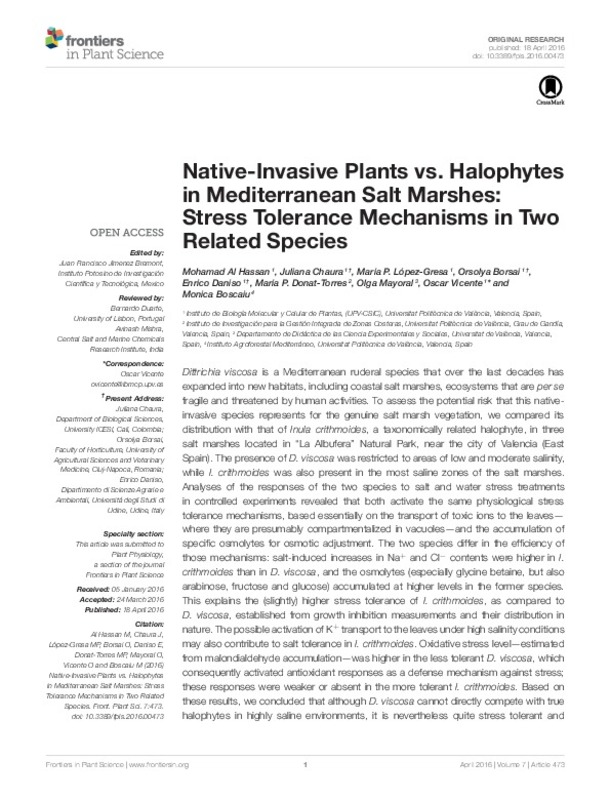|
Resumen:
|
Dittrichia viscosa is a Mediterranean ruderal species that over the last decades has expanded into new habitats, including coastal salt marshes, ecosystems that are per se fragile and threatened by human activities. To ...[+]
Dittrichia viscosa is a Mediterranean ruderal species that over the last decades has expanded into new habitats, including coastal salt marshes, ecosystems that are per se fragile and threatened by human activities. To assess the potential risk that this native-invasive species represents for the genuine salt marsh vegetation, we compared its distribution with that of Inula crithmoides, a taxonomically related halophyte, in three salt marshes located in La Albufera Natural Park, near the city of Valencia (East Spain). The presence of D. viscosa was restricted to areas of low and moderate salinity, while I. crithmoides was also present in the most saline zones of the salt marshes. Analyses of the responses of the two species to salt and water stress treatments in controlled experiments revealed that both activate the same physiological stress tolerance mechanisms, based essentially on the transport of toxic ions to the leaves where they are presumably compartmentalized in vacuoles and the accumulation of specific osmolytes for osmotic adjustment. The two species differ in the efficiency of those mechanisms: salt-induced increases in Na+ and Cl- contents were higher in I. crithmoides than in D. viscosa, and the osmolytes (especially glycine betaine, but also arabinose, fructose and glucose) accumulated at higher levels in the former species. This explains the (slightly) higher stress tolerance of I. crithmoides, as compared to D. viscosa, established from growth inhibition measurements and their distribution in nature. The possible activation of K+ transport to the leaves under high salinity conditions may also contribute to salt tolerance in I. crithmoides. Oxidative stress level estimated from malondialdehyde accumulation was higher in the less tolerant D. viscosa, which consequently activated antioxidant responses as a defense mechanism against stress; these responses were weaker or absent in the more tolerant I. crithmoides. Based on these results, we concluded that although D. viscosa cannot directly compete with true halophytes in highly saline environments, it is nevertheless quite stress tolerant and therefore represents a threat for the vegetation located on the salt marshes borders, where several endemic and threatened species are found in the area of study
[-]
|









